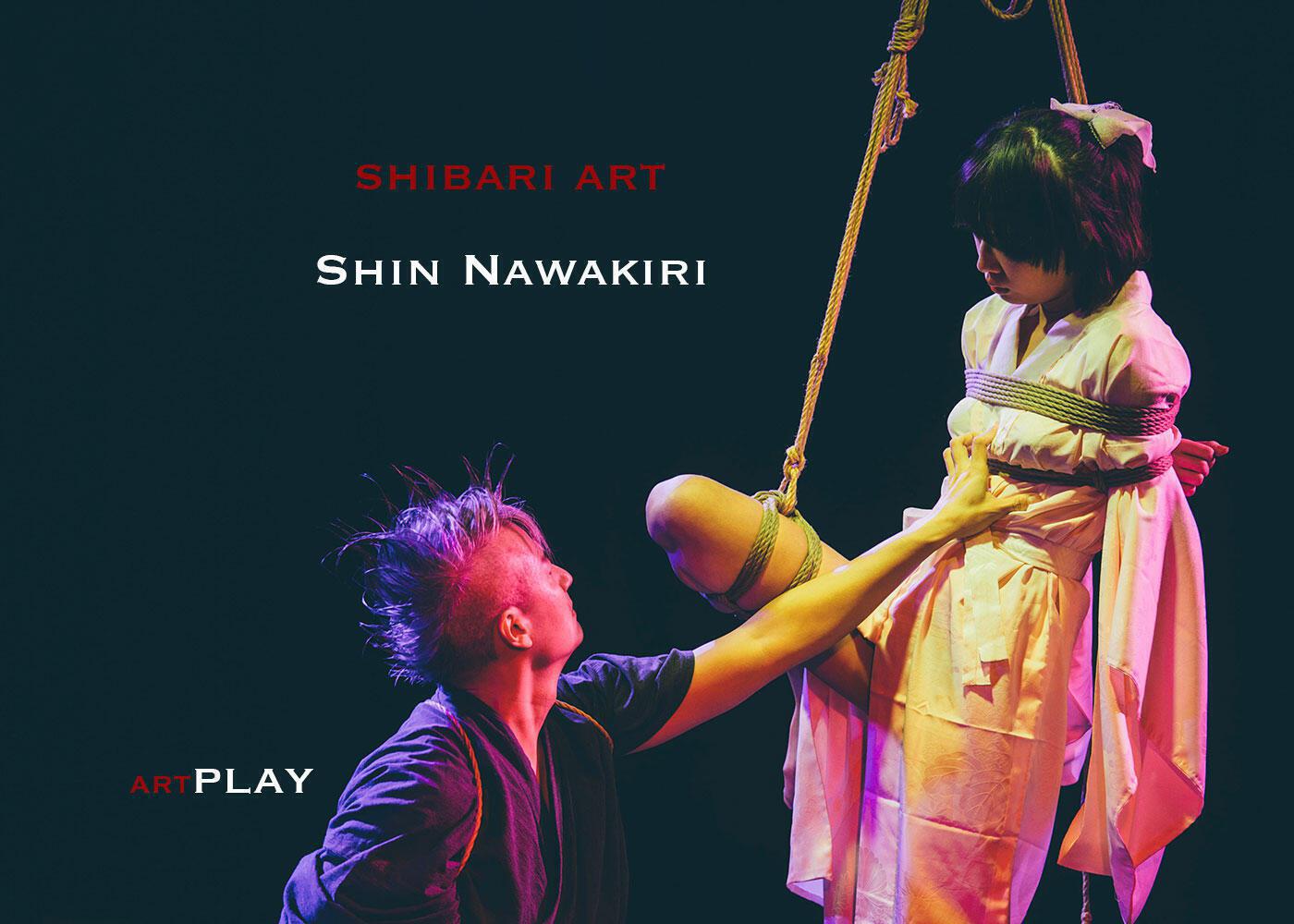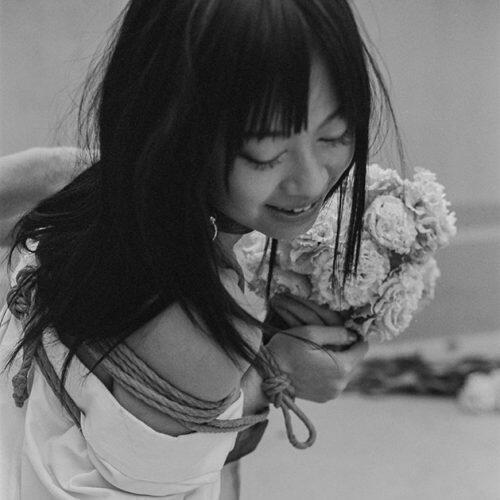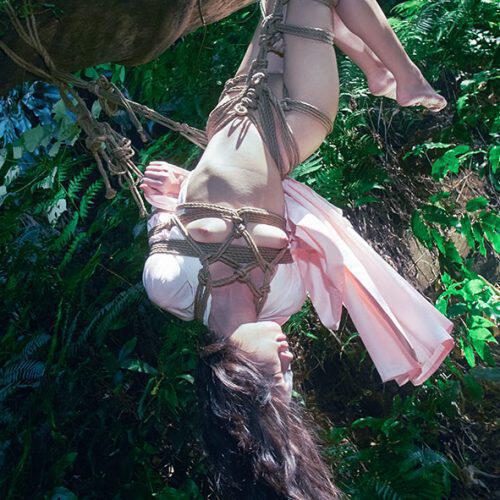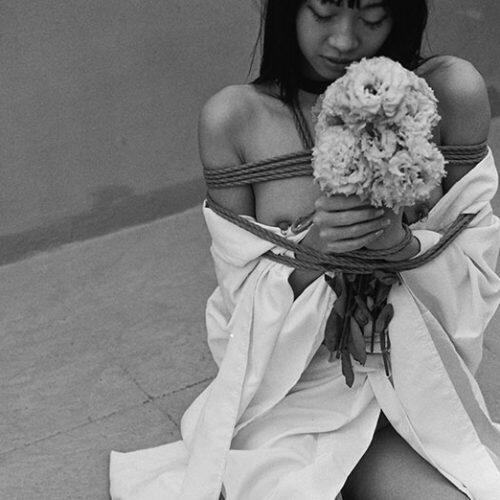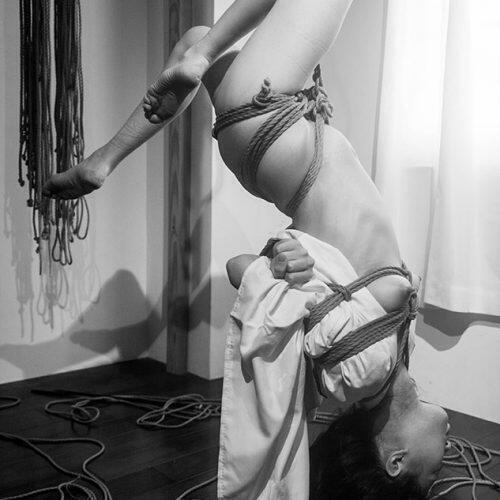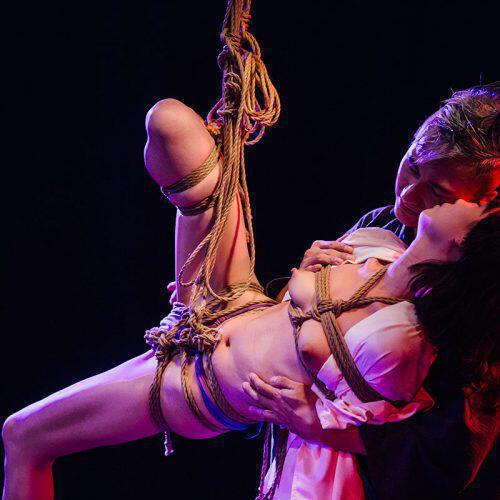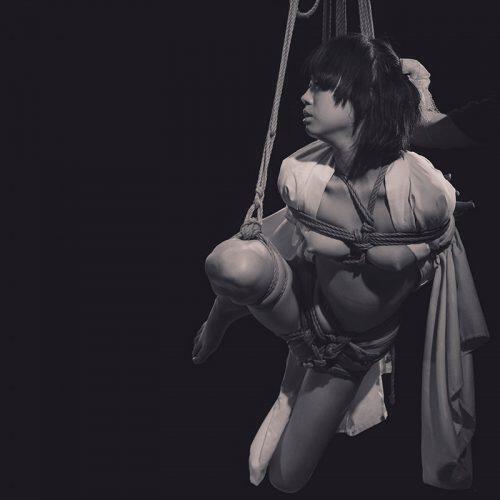
FAKE I-DOLLS by Magic Owen
December 11, 2018
fashion designers BCALLA
December 14, 2018
artPLAY SHIBARI ART…LET’S START PLAYING!
Shin Nawakiri is a Taipei based Shibari performer, artist and rigger, he talks to artPLAY in an exclusive interview about his Shibari style, about the rope scene in Taiwan and the difference in Shibari of the East and West, and about many other things.
Interview by Julien Kotobuki – Instagram
rigger Shin, model Miss Ivy
“Often people assume that in Shibari we like pain, but it is a mistake. We do not like all kinds of pain, what we enjoy is the atmosphere, this entire atmosphere when someone is in a mental space”.
artPLAY: How did you you start practicing ropes?
Shin: I started to learn ropes in 2003 when I moved to Japan. I was living there with my wife, who is Japanese. We were both interested in BDSM, so we decided to visit some adult bars (where shibari in Japan is usually showcased). One of them had an event going on that night, the owner’s birthday party, who was Nawashi Kanna. So it became “our bar”. Kanna was giving rope classes every Wednesday night, so we joined. The thing is, in Kanna’s bar, among many skilled students, I always felt that I needed to improve, so I just kept on learning.
To be honest, I did not expect to be a performer until Maya, a girl who was organizing kink events, pushed me to the stage. After I was back to Taiwan, I have withdrawn from SM events for a while. Maya pulled me back from my retreat and asked me to give performances. Thanks to her, I have regained motivation to continue my journey into shibari.
artPLAY: Could you talk to us a bit about the history and evolution of the rope scene in Taiwan?
Shin: I think there were some people doing rope bondage before us, but we do not really know about them. To the best of my knowledge, Maya and I were the first generation of people who learned from Japanese riggers, brought back those techniques to Taiwan, and gave classes to people. I think it was around 2004. That was also the time when we started our BDSM support group, the first ever in Taiwan. I think it is important to create a bridge between the kink circles and the rest of the society. We created this group called BDSM Taiwan (皮繩愉虐邦). We started to have public events inspired by the western munches. We were not sure about number of attendance, so we had to set the entrance fee higher. Because of the higher entrance fees, we felt that we had to offer small performances and courses during those “munches”. It was a bit complicated to organize, so we did that once every season maybe, and it was not really just munches anymore, but very big events on the local scene.
In 2004 we also participated the second Taiwan Pride parade, which would, in the next decade, grow to be the largest gay parade in Asia. We held banners for our group in the parade, so it was like we officially started to exist. Early 2005 Nawashi Kanna decided to come to Taiwan. No one here has ever seen rope performances like his. The following years, we invited two other performers, Chiaki and Mira Kurumi. After that, we tried to have more regular shibari performances. Most of them were organised by Maya. As you can see, we began by doing mostly performances, classes came later on. Now we are at a stage where it is harder to sell performances, nevertheless, it is also easier to organise rope events in Taiwan. When we started, it was hard to find a place who would agree to host such event, and people were afraid of police raid, although one have never happened.
“Now in Taiwan there are more and more shibari parties and performances, times are changing. I think what the community needs now is more workshops and classes, so the people can have access to a deeper understanding of shibari, since there are more people in the scene and more questions arise”.
artPLAY: Now a more personal question, how would you describe your style of Shibari?
Shin: I started learning from Kanna-san, he is for me one of the most skilled rigger worldwide. What I learned from Kanna is that safety is very important, and you are not supposed to hurt your partner in any ways. I guess my mind extended that to you can not let your partner feel any pain at all. I think that is something that is still inside me; people often tell me that compare to other riggers, my tying is gentle and not painful. Afterwards, I was doing more and more performances on stage, so I practiced more and more, but at some point it became not so satisfying for me and my partner. I started questioning myself on the meaning of that. We were enjoying being on stage and being watched, but not the rope itself.
A lot of things changed after I saw Akira Naka perform. His style, semenawa, is slow, but it gives the model the time to adjust herself, and every time you add a new rope, that is a new layer of restraint. At some point you can see that the model is in a mental state of “rope space”. You can see her sweat, almost feel the heat on stage. For me it is the definition of “beautiful suffering”. I do not think I remember any technics from Naka’s classes, however, now I try to value less the visual aspect of a performance to emphasis on the connection with my model, and make it a way to converse.
“What I am trying to do when I tie someone, is making it a way of saying to someone of how much I want her. Also I observe her and try to listen what she wants to say to me, it is really like a conversation. I also hope that this conversation can be felt by other people, so they would see that those people on stage love and want each other. It is what I wish to do, but I am still learning”.
artPLAY: You travelled a lot, what difference did you notice in the practice of ropes between the east and the west?
Shin: When I started to read western material, I saw that the way of learning was very methodical and scientific. This kind of systematic studying is what I did not see in Japan. Actually, most of the technics I use today come from western people, not from Kanna.
I think the western rope scene improve very quickly. My personal observation is that there is a culture of open discussion and classes in the west. That was really not the case in Japan. This systematic system of learning is a long tradition of the kink scene in the west. I later noticed that also within the SM scene, you have classes, while in Taiwan we have performances. I think the scene has to mature to a certain stage for people to realise that actually we need more courses than performances.
artPLAY: What about the cultural differences, not only the maturity of the scene?
Shin: My understanding is that, in the west, the SM scene started to rise with the leather men back in the fifties. From the beginning, the scene had a feeling of closed community, and to be part of this community, you have to gain recognition first. In Taiwan, people usually join the scene, find a partner, then disappear. When you see them again, it is generally when they break up — so we were jokingly saying that we should make more people break up, for the good of the scene! So there is a fundamental difference about how you should be a kinkster. This a very personal theory, but in the western scene, to become a kinkster is like joining a motorcycle gang, there is a feeling of really being part of a community, but in the east there is no such culture, the idea is just to find someone, close the door and play in private. I think western model helps to improve and share knowledge very quickly. For instance, the west became interested in shibari relatively recently, from then everything moved on very fast and many new techniques were invented.
artPLAY: According to you, is shibari a more of an art or SM practice?
Shin: I think it is not restricted to those two. A long time ago, when we were starting promoting BDSM in Taiwan, we were often asked this question: is it art or is it pornography. We always thought it is a false dichotomy. Of course art can be about sex, sexuality and desire. After some arguments with the venues hosting our events that are quite conservative I then made an angry statement. Some people tend to defend shibari saying it is “actually quite beautiful”, but I want to show people it is not just superficially beautiful. What I wish to do with my performances is not just showing something beautiful to you, but it is to surprise you, shock you, so people might think “oh, is it possible? Can people do this? Can people love this way, behave this way? How could this exist in the world?”. I want them to be shocked so they wake up the next morning seeing everything differently. Even if they do not realise it immediately, the can not see things the way they used to be.
The question was is it art or SM, well, for me art is having something to say, and maybe through this art I am saying something about SM and sexuality. For me rope is a language, and you can say pretty much everything with that language.
“Art for me is not just like a beautiful vase, it’s more than that because through this vase, I am making a statement, and it can be about many things, it can be about how I see the world, how I see my relationships, how I see sexuality, how much I want a person, or how we express love in a very physical and sexual ways”.
artPLAY: What do you think about the integration of shibari into fashion and mainstream culture?
Shin: Indeed, we see this have been happening for a while. On one hand I think it is a good thing. As I said, shibari is a language, it is good when it gets more exposure, so more people can see this form of expression and maybe learn this language. On the other hand, my worry would be that during the process, people would remove shibari from its social context, and would do a form of cultural appropriation. I think that we, as a subculture, would like to gain from this integration, we would like to improve our situation, economically or regarding laws for example. I do hope when people incorporate shibari with other forms of arts, they do not forget where it comes from. What people should not do is to say that what they are doing is only art performance, so it is not SM, it is not sex, because if they do that, they are not bringing advantages or resources to our community, and actually they are making it worse by pushing it away.
artPLAY: Shin, thank you for your time and our interesting conversation. We are with your model Ivy. Miss Ivy, do you have something to add?
Ivy: About the east and the west, there is one difference I noticed. In the east, when a model is being tied, they do not go through a lot of physical preparation beforehand, also they do not really train in their daily life in order to be a better model. In the west I saw many people practicing stretching and training in order to be tied and there are many classes and learning material made for rope models. While in the east that kind of thing has not started yet, and I hope we could have this in Taiwan too. Although in Taiwan the situation is not as extreme as we saw in China, where we noticed that being a rigger or dominant is something you can be proud of, while being a submissive or a rope model is something rather embarrassing. I think one reason for this atmosphere is that people think that being a rigger is difficult, requires technical skills, training, and that during a play they are the one who is active, while the model does not do anything and does not require any skills. It is false of course, and I think it could be a good thing that we have more classes and open discussions for everyone.
“About the incorporation of shibari into mainstream culture, I noticed sometimes that people who are in other forms of art say it is not BDSM related, they say it can be like yoga. I think by doing that they are cutting off the roots of this practice, and denying where it comes from. When you are talking about a subculture, you cannot just separate it from where it is from. Especially when you have a louder voice in the mainstream culture, you have to be aware of what you are saying, and you have a responsibility toward this subculture.” Ivy.
http://shibaru.life/
http://bittersweet.asia/
www.instagram.com/ropejuju
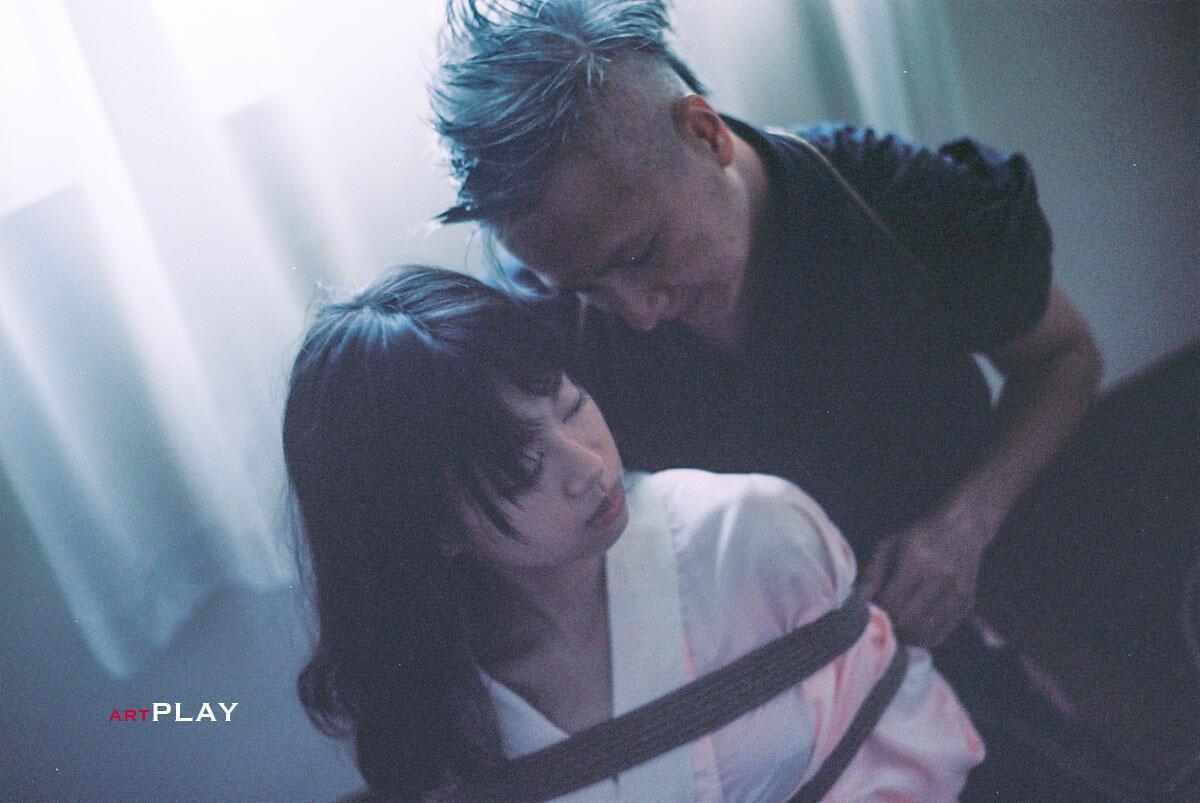
photo by Cat Keng
(C) artPLAY is a source for the creative minds

